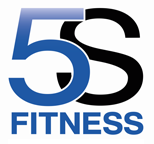Often debated against the squat as the king of all exercises, the deadlift will build transferable strength like no other. The kind of rate of force production required to pick up a heavy deadlift is quite unlike any other exercise, this is largely due in fact to the lack of the eccentric factor. Eccentric muscle loading in all other lifts helps to prime the muscles and the CNS to get ready to fire up, add the well known stretch shortening cycle in there and your well on your way to developing that force. In the deadlift there is no eccentric factor, you simply have to apply force as fast as you can, no one ever lifted a heavy weight slow, to explode all the way to the top. This primal exercise is much in the same as the squat in terms of assistance exercises with a few slight differences. Again be sure to find your weakness, this is just a rough guideline.
Deficit Deadlifts : A deficit deadlift is where you increase the range of motion of the classical lift by standing on a platform of some kind. This can be a wooden purpose built board, or simply a couple of 20kg plates stacked on top of one another. This makes the initial pull much harder, as you have to learn to really contract and fire those hamstrings up to start the initial drive. Start on a slight deficit at first, say around 2 inches, when you become more advanced and more comfortable with the movement progress up to 4 inches and even 6.
Rack Deadlifts : Just like with the squat where we shortened the range of motion, we can do the same with the deadlift by this time elevating the bar. This is best done on the pins in a power rack, but if you have the resources, can be as simple as stacking jerk boxes or weight plates on top of one another. The primary goal here is working through sticking points. If you typically stall around knee level, set the pins there. If you stall at lockout then set the pins much higher, around mid thigh, and really focus on driving those hips forward. The secondary goal is overload. You should be much comfortable with heavy weight from a rack, this will build vice like grip and a solid, thick back.
RDL : Romanian Deadlifts and their partner, straight legged deadlifts, are a hip hinge movement that works exactly the same pattern as the good morning exercise. The only difference here is the loading. Where as on the good morning the bar is held high on the traps, during the RDL’s the bar is held, you guessed it, in the hands. Just remember to maintain a neutral spine and it is often encouraged, although I’m not a big fan, to wear wraps especially as the weight gets heavier.
Robust Upper Back Routine : Many high level pullers insist that they don’t have to deadlift often to improve their numbers. They often credit a steady, solid upper back routine. This will largely consist of heavy rows, most popular being Kroc rows. These rows are a slight variation of traditional one armed dumbbell rows, the only difference being you pick a heavy weight and you rep the hell out of it. Maintain good form for the solid reps you can get, after that use the entire musculature of the back to really crank out those extra reps. Rep ranges for this beast of an exercise should start at 15, but certainly don’t be afraid to push all the way into the 30s. Couple heavy rows along with weighted pull ups and lat pull downs and your on to a winner.
